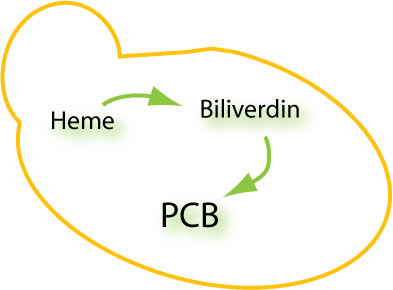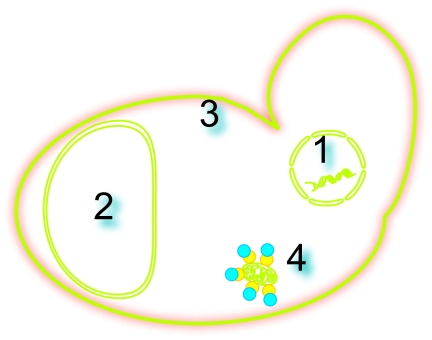Team:MIT/Projects
From 2009.igem.org
(→Project 2: Rapid & Reversible Protein Localization using PhyB-PIF3 System) |
(→Project 2: Rapid & Reversible Protein Localization using PhyB-PIF3 System) |
||
| Line 29: | Line 29: | ||
{| cellspacing="5" | {| cellspacing="5" | ||
| - | |width=" | + | |width="70%" class="green3" | |
<!-- Project Description HEADER with edit link--> | <!-- Project Description HEADER with edit link--> | ||
[[Image:localization_system.jpg|center]] | [[Image:localization_system.jpg|center]] | ||
| Line 35: | Line 35: | ||
<!-- END RESOURCES HEADER--> | <!-- END RESOURCES HEADER--> | ||
| - | |width=" | + | |width="30%" class="green3" | |
<!-- Project Description HEADER with edit link--> | <!-- Project Description HEADER with edit link--> | ||
<h3>Brief Description</h3> | <h3>Brief Description</h3> | ||
Revision as of 21:44, 21 October 2009
Project 1: Metabolic Engineering of PCB Synthesis in Yeast
|
|
Brief DescriptionOur project uses the PhyB-PIF3 system to create this fast-reversible switch. Phycocyanobilin (PCB) is a chromophore necessary for this switch to work. PCB is the protein that senses light and changes its conformation to allow PhyB to bind to PIF3, as well as unbind. In its inactive conformation, noted as the Pr conformation, can absorb red light and change its conformation to the active conformation, noted as the Pfr conformation. In the active conformation, PCB can absorb far-red light to revert back to the inactive conformation. We wanted to make this process self-sufficient. Therefore if the yeast was able to synthesize the PCB itself, it would not have to always be supplemented.
|
Project 2: Rapid & Reversible Protein Localization using PhyB-PIF3 System
|
|
Brief DescriptionDESCRIPTION ........................................ |
 "
"

